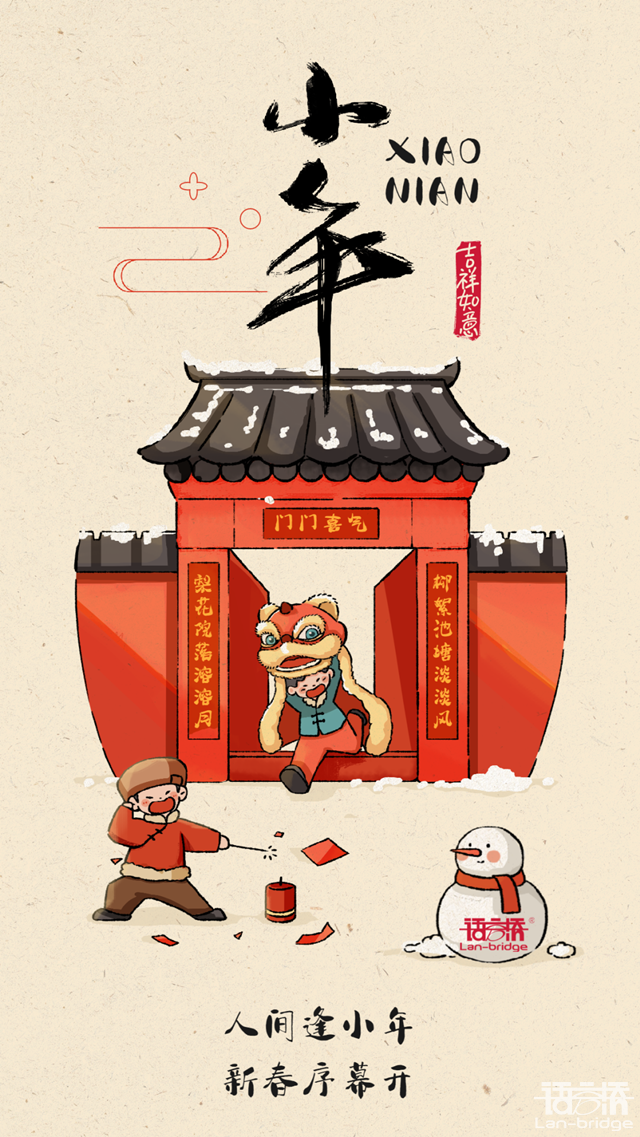由于风俗差异,日历将腊月廿三和廿四都标注为小年,原因在于南北方的小年会相差一天,北方多数人廿三过小年,而南方人的小年则要晚一天。
小年也被视为过年的开端,因此这几天全国人民都开始为迎春节做起了准备啦。
官家的小年是腊月二十三,百姓家的是腊月二十四,而水上人家则是腊月二十五。那时,祭灶日的地位仅次于中秋节,在外做官、经商或读书者,都要在祭灶日前赶回家团圆,吃自家做的祭灶糖果,以求灶神祈福、来年全家平安。小年是春节庆祝活动的开始和伏笔,是春节的序幕开端。
小年习俗
【祭灶】
小年最独特的一个传统就是焚烧灶王爷的画像,以此派遣灶王爷的灵到天界去报告过去一年这个家庭的行为。然后在灶旁贴一张他的新画像来欢迎他回家。
(Kitchen God Worshipping)One of the most distinctive traditions of the Little New Year is the burning of a paper image of the Kitchen God, dispatching the god's spirit to Heaven to report on the family's conduct over the past year. The Kitchen God is then welcomed back to the home through the pasting of a new paper image of him beside the stove.
【扫尘】
在中国,“尘土”的“尘”这个汉字与“陈旧”的“陈”同音。中国人相信,通过彻底地清扫房子,可以让他们摆脱过去一年的贫穷和霉运,迎来一个繁荣的新年。
(Spring Dust)In Chinese, the character for "dust" is a homophone of the character for “the old”. By giving the house a thorough cleanse on the day, Chinese people believe that this would rid them of their poverty and bad luck from the previous year, so as to welcome a prosperous new year.
【贴春联和窗花】
在小年的时候,上个春节时贴的春联和窗花被摘了下来,新的窗花、年画和喜庆的装饰品会被张贴起来。
(stick couplets and window decorations)In the Little New Year, old couplets and paper-cuts from the previous Spring Festival are taken down, and new window decorations, New Year's posters, and auspicious decorations are pasted up.










 蜀ICP备14015776号-4
蜀ICP备14015776号-4
